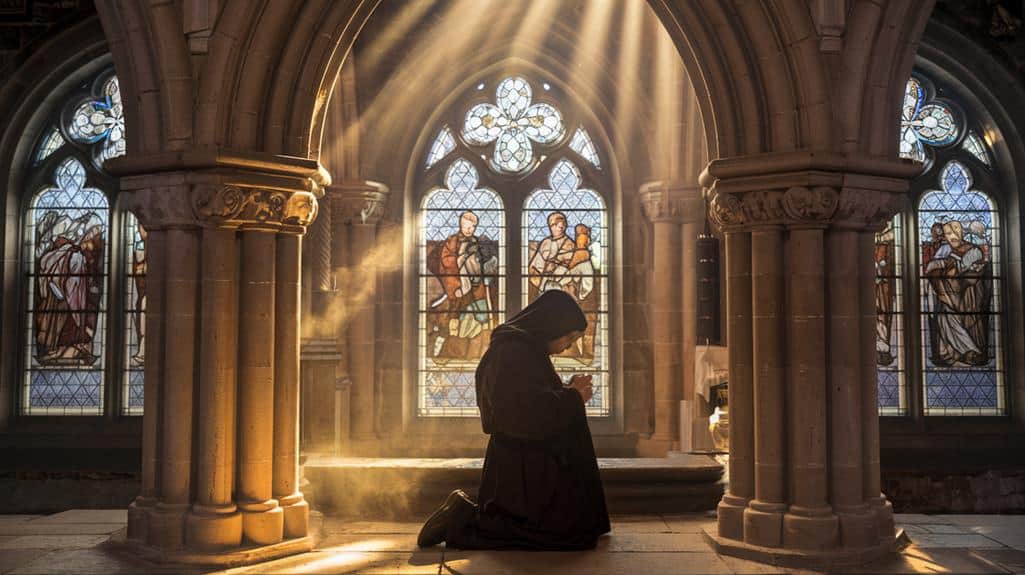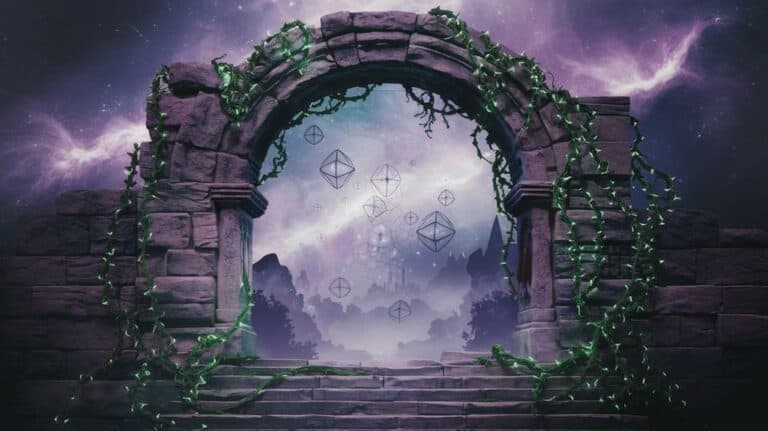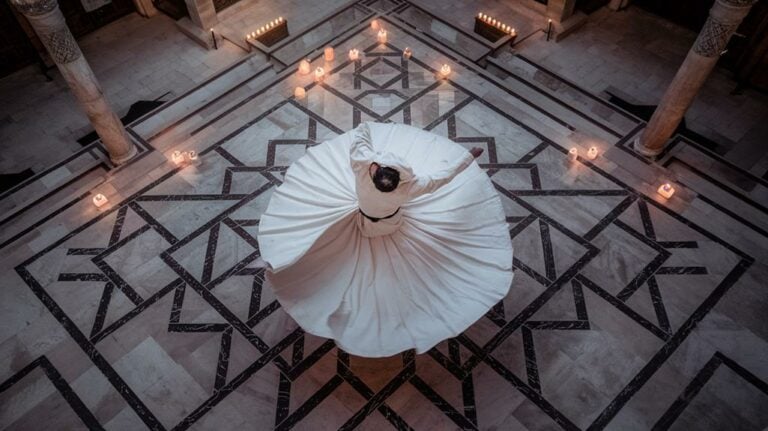What Is Catholic Mysticism?
You’ve probably heard of Catholic mysticism, but you might wonder what separates it from regular religious practice. It’s a profound spiritual path that goes beyond routine prayers and rituals, inviting you into a direct, transformative relationship with the Divine. While traditional Catholic devotions form its foundation, mysticism takes you deeper into sacred mysteries through contemplative practices, visions, and what mystics describe as a “union with God.” As you explore this ancient tradition, you’ll discover why influential figures like Teresa of Ávila and John of the Cross devoted their lives to understanding and sharing these extraordinary spiritual experiences.
Origins of Catholic Mysticism
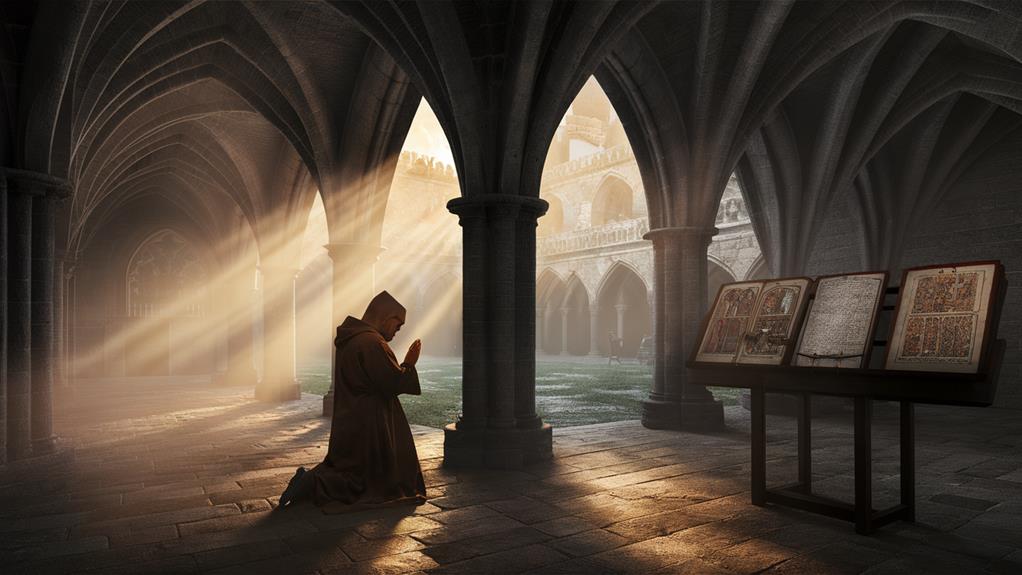
The origins of Catholic mysticism trace back to the earliest days of Christianity, emerging from both Jewish contemplative traditions and Greek philosophical influences. You’ll find these ancient roots deeply embedded in practices like lectio divina and contemplative prayer, where your soul can touch the divine through meditation and sacred texts.
As you explore this spiritual heritage, you’ll discover how early Desert Fathers and Mothers retreated into solitude, creating a framework for mystical encounters that would shape centuries of Catholic spirituality. Their experiences weren’t merely personal revelations but became foundational teachings that you can still access today.
These pioneers developed methods of prayer and contemplation that transcend time, offering you direct pathways to divine connection. In the merging of Neo-Platonic thought with Christian doctrine, you’ll see how influential figures like Augustine and Pseudo-Dionysius crafted a sophisticated understanding of mystical theology.
They’ve given you a legacy where reason and mystery intertwine, where your intellectual pursuit of God can dance with direct, transformative experiences of divine presence. It’s a heritage that continues to offer you profound ways to encounter the sacred in your own spiritual journey.
The Mystical Experience
Diving into Catholic mystical experience reveals a profound encounter between the human soul and divine presence. You’ll find that these sacred moments transcend ordinary consciousness, lifting you into what mystics call “divine union” – a state where you’re acutely aware of God’s immediate presence within your being.
During these experiences, you’ll notice that time seems to dissolve, and your usual sense of self begins to fade. You might encounter vivid spiritual visions, experience intense feelings of ecstasy, or discover a deep, wordless knowing that defies rational explanation. The mystics describe this as entering the “cloud of unknowing,” where you’ll paradoxically understand more by accepting that you understand less.
You’ll discover that mystical experiences often follow a pattern: first, a period of spiritual preparation through prayer and contemplation; then, the actual encounter, which you can’t control or summon at will; and finally, a transformative aftermath that leaves you forever changed.
While each person’s journey is unique, you’ll find these encounters share common elements: profound peace, ineffable joy, and an overwhelming sense of divine love.
Notable Catholic Mystics
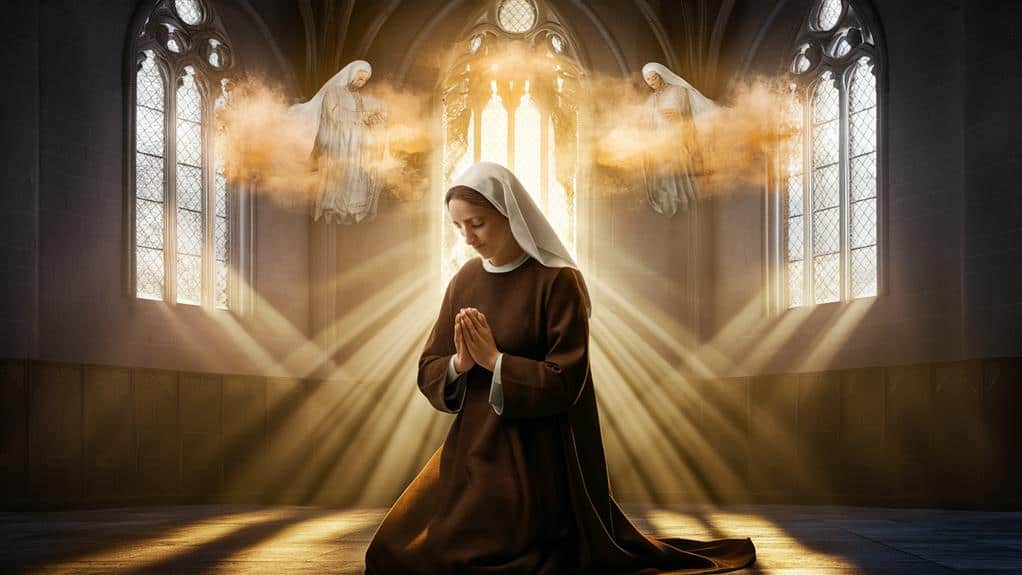
Throughout history, countless Catholic mystics have shaped the Church’s spiritual tradition through their extraordinary encounters with God.
You’ll discover profound wisdom in the works of Teresa of Ávila, whose “Interior Castle” maps the soul’s journey through seven dwelling places toward divine union. John of the Cross’s “Dark Night of the Soul” illuminates your path through spiritual darkness, while Catherine of Siena‘s mystical dialogues reveal intimate conversations with the Divine.
In more recent times, you’ll find Thérèse of Lisieux’s “little way” offering a accessible path to holiness through simple, daily acts of love.
Padre Pio’s stigmata and bilocation experiences challenge your understanding of physical limitations, while Thomas Merton’s contemplative insights bridge Eastern and Western spirituality.
Each mystic’s journey offers you unique perspectives on divine communion – from Hildegard of Bingen’s vivid visions to Julian of Norwich’s revelations of divine love.
In their writings, you’ll encounter not just historical accounts but living testimonies that can transform your own spiritual path, showing you that mystical experience isn’t reserved for the few but available to all who seek it deeply.
Contemplative Prayer and Meditation
In Catholic mysticism, contemplative prayer and meditation serve as foundational practices for deepening your relationship with God. Through these sacred disciplines, you’ll discover pathways to divine union that transcend ordinary consciousness and open doorways to profound spiritual awareness.
As you enter contemplative silence, you’re invited to release your usual stream of thoughts and rest in God’s presence with loving attention.
You’ll find that contemplative prayer differs from traditional meditation in its ultimate aim: while meditation often focuses on scripture or sacred images, contemplative prayer moves beyond concepts into a wordless communion with the Divine. This practice calls you to embrace what mystics term “the cloud of unknowing,” where you’ll learn to seek God not through intellectual understanding but through the heart’s silent reaching.
As you progress, you’ll discover that regular practice transforms your entire being, cultivating an ever-deepening receptivity to Divine presence.
When you engage in these practices, you’re participating in a centuries-old tradition that’s carried forward the mystical dimension of Catholic spirituality, offering you direct experience of the sacred mysteries that words alone can’t convey.
Stages of Spiritual Growth

Catholic mystical tradition recognizes distinct stages of spiritual growth that mark your journey toward divine union.
Like a spiritual ladder ascending to heaven, you’ll move through the purgative way, where you’ll confront your attachments and begin purifying your soul through prayer and self-examination.
As you progress, you’ll enter the illuminative way, where God’s presence becomes more apparent, and you’ll experience deeper insights into divine mysteries.
The final and most profound stage is the unitive way, where you’ll find yourself drawn into intimate communion with the Divine.
Here, you’re no longer simply observing God from afar – you’re experiencing a profound merging of your will with God’s will.
Throughout these stages, you’ll notice your prayer life deepening, your understanding expanding, and your spiritual sensitivity heightening.
You may encounter periods of spiritual darkness, known as “the dark night of the soul,” which paradoxically signal advancement in your mystical journey.
Each stage builds upon the previous one, transforming your consciousness until you’re living in an almost continuous state of divine awareness.
Common Mystical Practices
Core mystical practices within the contemplative tradition include centering prayer, lectio divina, and contemplative meditation.
In centering prayer, you’ll find yourself settling into sacred silence, using a chosen sacred word as an anchor to gently return your wandering thoughts to God’s presence. This practice invites you to move beyond conventional prayer into deeper communion with the Divine.
Lectio divina calls you to engage with sacred texts in four movements: reading, meditation, prayer, and contemplation.
You’ll discover how words become living wisdom as you allow them to penetrate your heart, transforming your understanding of both scripture and self. The practice opens doorways to profound spiritual insights that mere intellectual study can’t achieve.
Contemplative meditation draws you into the mystery of direct experience with the Divine.
You’re invited to rest in God’s presence without agenda or expectation, allowing yourself to be held in sacred awareness. Through this practice, you’ll learn to transcend the usual boundaries of ego-consciousness, experiencing moments of unity with the Divine that words can’t fully capture.
Sacred Symbols and Images
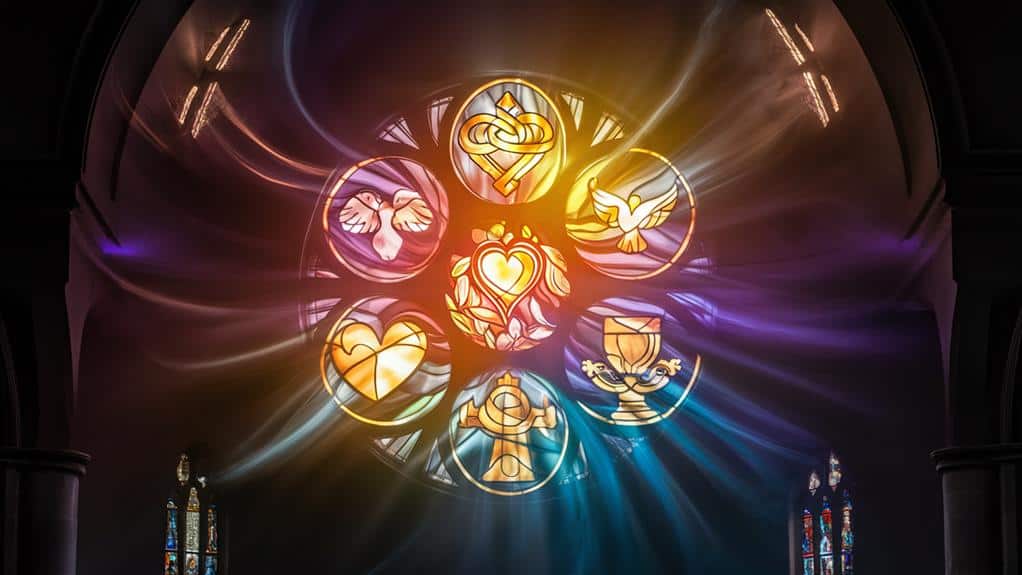
Mystical practices find powerful expression through the rich landscape of sacred symbols and images in Catholic spirituality. You’ll encounter these sacred elements as gateways to deeper spiritual understanding, where each symbol serves as a bridge between the visible and invisible domains.
The crucifix, for instance, isn’t merely a representation of Christ’s sacrifice but becomes a focal point for contemplating the mysteries of divine love and human suffering.
As you explore deeper into Catholic mysticism, you’ll discover how sacred images transform from mere artistic expressions into portals of divine encounter. The icons of saints, with their penetrating gazes and golden halos, invite you into a space where time seems to stand still.
You’ll find that the rosary’s beads become more than counting tools – they’re tactile anchors for your consciousness as you navigate through contemplative states.
Even architectural elements like soaring Gothic arches and streaming light through stained glass windows aren’t just aesthetic choices; they’re designed to draw your spirit upward, creating an environment where mystical experiences can unfold naturally within the sacred space.
Modern Catholic Mysticism
Three distinct currents shape modern Catholic mysticism in today’s rapidly evolving spiritual landscape.
You’ll find a renewed interest in contemplative practices, with many Catholics returning to ancient meditation techniques while incorporating contemporary mindfulness approaches. The digital age hasn’t diminished these practices but has instead created new pathways for mystical engagement through online prayer communities and virtual spiritual direction.
You’re witnessing a second current in the integration of ecological spirituality, where you’ll discover mystics who find divine presence in nature’s rhythms and Earth’s sacred spaces.
This eco-mysticism draws from both traditional Catholic teachings and modern environmental consciousness, helping you recognize God’s presence in creation’s intricate patterns.
The third current flows through social justice mysticism, where you’ll experience contemplation and action merging into a unified spiritual path.
You’re called to find God not only in silent prayer but in active engagement with the world’s suffering. This mysticism invites you to see Christ in the faces of the marginalized, transforming your spiritual journey into one that embraces both personal transformation and social change.
Living the Mystical Path
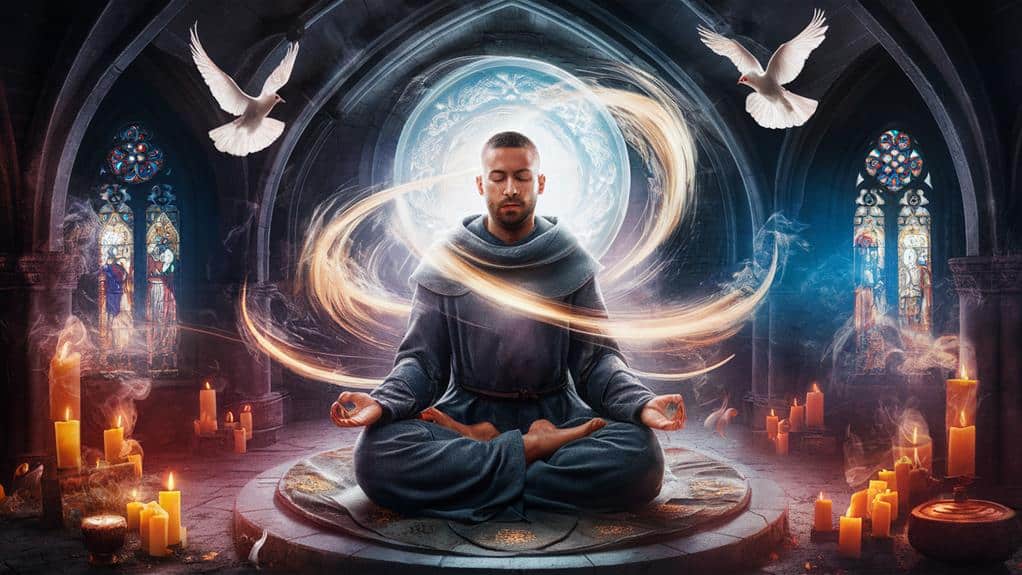
Walking along the mystical path requires both dedication and discernment in your daily spiritual practice.
You’ll find yourself drawn into deeper waters of contemplation as you open your heart to God’s transformative presence, discovering that each moment can become a sacred encounter with the Divine.
In your journey, you’ll learn to recognize the subtle movements of grace in your life – from the quiet whispers of prayer to the profound stillness that emerges in meditation.
You’re called to embrace both the light and shadow aspects of your spiritual development, understanding that darkness often precedes illumination.
As you progress, you’ll discover that mystical experiences aren’t meant to be pursued for their own sake but emerge naturally from your deepening relationship with God.
Your path may lead you through periods of spiritual dryness and moments of ecstatic union, each serving as stepping stones toward greater intimacy with the Divine.
Remember that you’re participating in a tradition that spans centuries, joining countless mystics who’ve walked this path before you, each finding their unique way of expressing the inexpressible mystery of God’s love.
Conclusion
As you journey deeper into Catholic mysticism, you’ll discover it’s far more than ancient practices and historical figures. It’s a living, breathing path that’s calling you to explore the depths of divine love. Whether through contemplative prayer, sacred readings, or mystical encounters, you’re invited to embrace this transformative journey. The mystic’s path remains as essential today as it was centuries ago, waiting for your own unique exploration.



